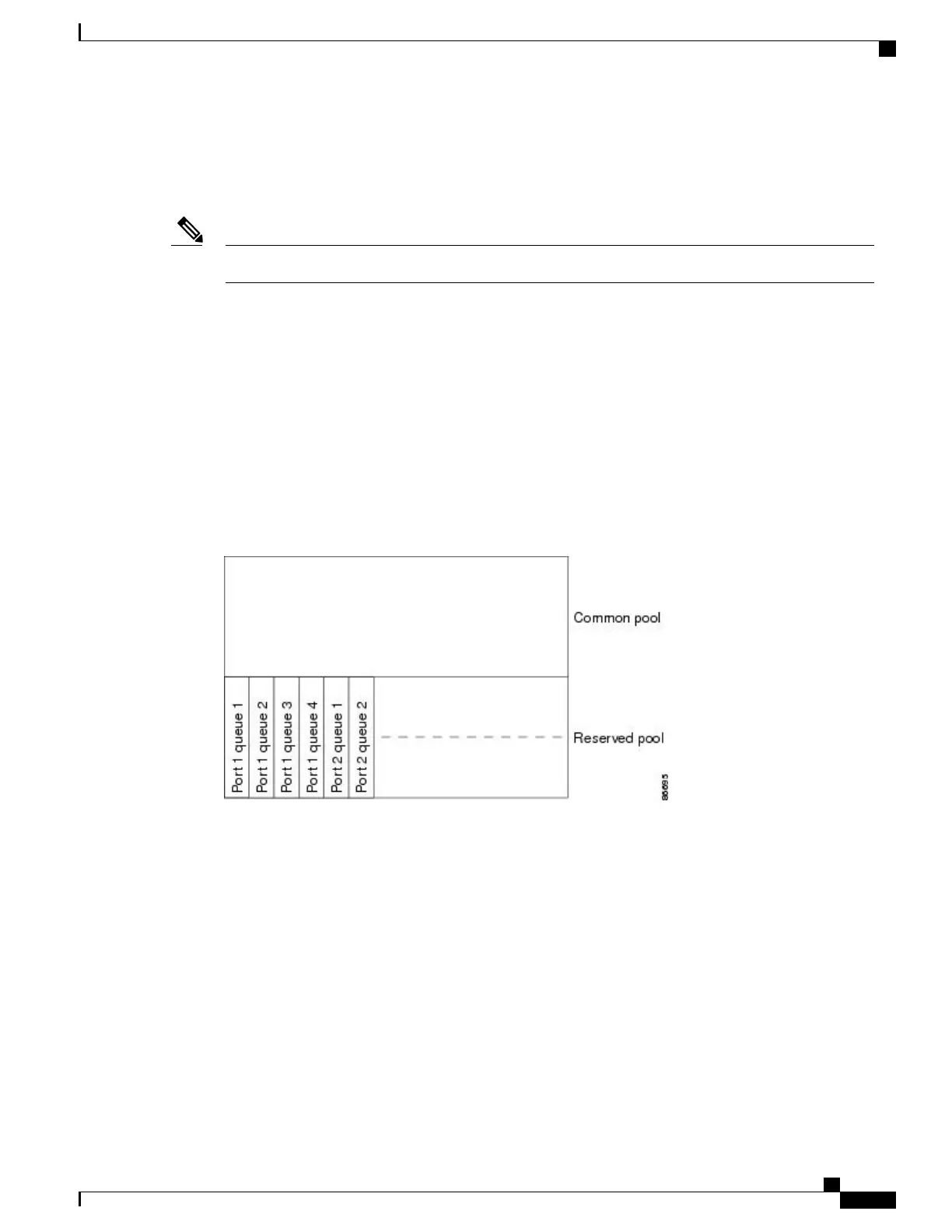Egress Expedite Queue
Each port supports four egress queues, one of which (queue 1) can be the egress expedite queue. These queues
are assigned to a queue-set. All traffic exiting the switch flows through one of these four queues and is subjected
to a threshold based on the QoS label assigned to the packet.
If the expedite queue is enabled, SRR services it until it is empty before servicing the other three queues.Note
Egress Queue Buffer Allocation
The following figure shows the egress queue buffer.
The buffer space is divided between the common pool and the reserved pool. The switch uses a buffer allocation
scheme to reserve a minimum amount of buffers for each egress queue, to prevent any queue or port from
consuming all the buffers and depriving other queues, and to control whether to grant buffer space to a
requesting queue. The switch detects whether the target queue has not consumed more buffers than its reserved
amount (under-limit), whether it has consumed all of its maximum buffers (over limit), and whether the
common pool is empty (no free buffers) or not empty (free buffers). If the queue is not over-limit, the switch
can allocate buffer space from the reserved pool or from the common pool (if it is not empty). If there are no
free buffers in the common pool or if the queue is over-limit, the switch drops the frame.
Figure 61: Egress Queue Buffer Allocation
Buffer and Memory Allocation
You guarantee the availability of buffers, set drop thresholds, and configure the maximum memory allocation
for a queue-set by using the mls qos queue-set output qset-id threshold queue-id drop-threshold1
drop-threshold2 reserved-threshold maximum-threshold global configuration command. Each threshold value
is a percentage of the queue’s allocated memory, which you specify by using the mls qos queue-set output
qset-id buffers allocation1 ... allocation4 global configuration command. The sum of all the allocated buffers
represents the reserved pool, and the remaining buffers are part of the common pool.
Through buffer allocation, you can ensure that high-priority traffic is buffered. For example, if the buffer
space is 400, you can allocate 70 percent of it to queue 1 and 10 percent to queues 2 through 4. Queue 1 then
has 280 buffers allocated to it, and queues 2 through 4 each have 40 buffers allocated to them.
You can guarantee that the allocated buffers are reserved for a specific queue in a queue-set. For example, if
there are 100 buffers for a queue, you can reserve 50 percent (50 buffers). The switch returns the remaining
50 buffers to the common pool. You also can enable a queue in the full condition to obtain more buffers than
Consolidated Platform Configuration Guide, Cisco IOS Release 15.2(4)E (Catalyst 2960-X Switches)
561
Information About QoS

